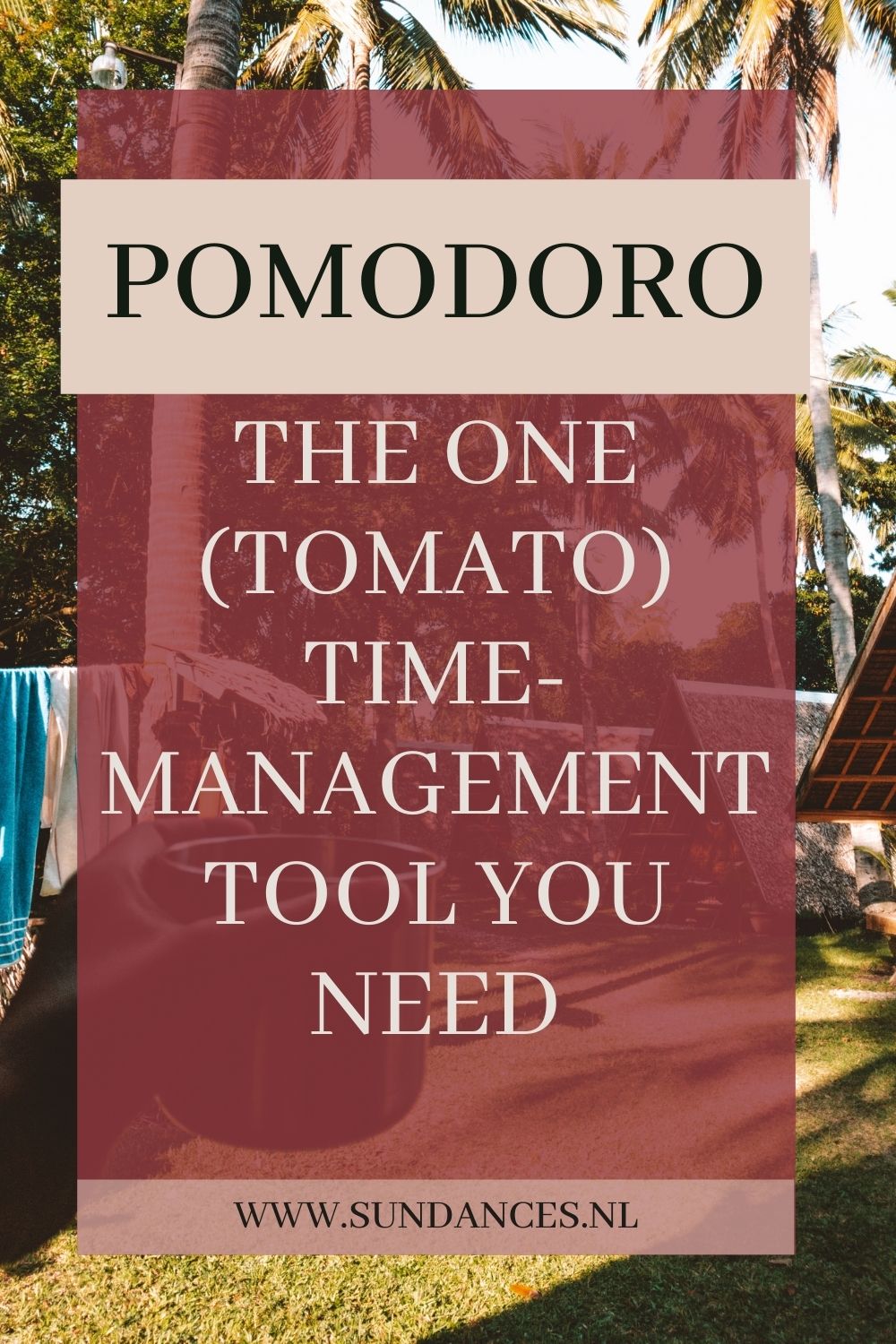Staying concentrated is hard. I don’t know about you, but I find it hard. Even though I want my task to be finished. I really, really, really want it. But working a whole day without getting distracted, super tired, or just ‘done with it’, is hard.
OK, I am aware there are also people out there without this issue. Who will read this and think ‘you just gotta sit and work, what’s so hard about that?’ But this post isn’t about those crazy, alien persons. It’s about you and me, the normal ones, who might sit down and work but for like, 5 minutes. And then (want to) leave.
And when we do try to concentrate for a longer time (which we do because we’re not lazy, just easily distracted) we get superduper tired.

Which results in everything taking ages before it’s finished. Feeling like you spend a thousand times the amount of time on a task as someone else. Working all day but still not feeling productive. And being enormously tired after working for a day.
This is where you need some sort of foundation way of working. And for me, that’s the Pomodoro technique. It doesn’t just help with concentrating for longer amounts of time, it also helps me with making sure I don’t tire myself out – which is ideal because it’s mostly one or the other with me, no in-between!
Let’s get into what the Pomodoro technique is, why it works, the steps to a successful Pomodoro, and a few tips to end it up!
What is Pomodoro?
So what is this Pomodoro technique? It’s a simple time management tool to help you stay concentrated and avoid distractions.
It all started when the Italian Francesco Cirillo just couldn’t get shit done. Both internal & external distractions kept him from doing the work that he needed to do.
And he decided that enough was enough. He grabbed a kitchen timer, tomato (or Pomodoro in Italian) shaped, and put in on 25 minutes. For those 25 minutes, he wouldn’t let anyone, either others or himself, distract him from his work.
And it worked! Not only for him but also for the 2 million people who have tried it since the eighties, when Cirillo started it.

Why does Pomodoro work?
Why does it even work? Here are a few reasons:
- The Pomodoro technique urges you to work really hard and concentrated, but also makes sure you don’t tire yourself out immediately
- As my highschool teacher always said: 4×20=100 when it comes to studying
- Because of the 25-minute timeframes insist on urgency, you’ll be more likely to actually do the work. If you have a whole workday in front of you, you don’t feel the pressure as much, and as a result, procrastinate quicker. With just 25 minutes ahead of you to get the task done, there way more pressure to start right now
- You get rid of distractions
- The physical act of either winding up the timer of putting a timer on your phone shows to your brain that you’re serious about it

THE 7 STEPS to a successful Pomodoro
As you know by now, the Pomodoro technique uses 25-minute timeframes. And even though it’s not a complicated process at all, it does have a little bit more steps than just that.
Let’s take a look:
- Start with inventorying the tasks that you want to do. Focus on the ones that you want to do at this moment and not on all the other tasks that need to be done someday
- From this inventory list, make a task list. Divide or merge tasks so that they will take 25 minutes to complete. Then order them to priority.
- Put your timer on 25 minutes and work on your number 1 task until those 25 minutes or fully done.
- Cross off your finished tasks and take a 5 minute break.
- Repeat steps 3 and 4 until you have completed 4 Pomodoro’s, which means 2 hours.
- Take a longer break, think 15-30 minutes
- Do one more session of 4 pomodoro’s.
Easy, right?! You can do as many sets of 4 Pomodoro’s as you like, but I think two will be enough. Otherwise, you’ll probably still tire yourself out!

Tips & tricks
As easy as it is, doesn’t mean there won’t be any bumps on the way. I’ve compiled a list of most useful tips for when you’re starting with the Pomodoro technique:
- Find a good app or a real-life timer. I have used the BeFocussed app which I really liked, but recently I am just putting my phone on Forrest. If you want to go full-in, check out this tomato timer!
- Make sure your surroundings make it as easy as possible for you to concentrate. A nice chair, comfortable clothing, and something to drink. How to deal with other people is described in step 5!
- Give yourself a reward after one Pomodoro. Maybe your fav treat or 5 minutes of social media. You don’t have to do this forever, just to get yourself started and used to the technique! The same goes for after a set of 4 Pomodoro’s!

- For internal distractions, I like to use a ‘braindump’. This is a blank page where you write whatever comes to mind, just so your brain knows it’s safe to let it go. It can go from things like ‘I need to get some bread tomorrow’ to ‘That red dress doesn’t look good anymore, maybe I should throw it out’. Never mind how silly it sounds, just get it out of your head!
- For external distractions, use the ‘inform, negotiate, and call’ technique, also set up by Cirillo. This means: whenever someone tries to interrupt you, you do the following things:
- Inform: Tell them you’re in the middle of a Pomodoro, yes, something tomato related, and you can’t help them right now. You’ll explain the details of this tomato related work later, or share this post with them so they know what you’re up to!
- Negotiate: Immediately name a moment when you’ll be able to help them out. Maybe in your 15-30 minute break after 4 Pomodoro’s.
- Call: Honour your commitment to coming back to it. This way you’ll show the people around you that you’re true to your word. Whenever you tell them you’re in a Pomodoro in the future, they’ll know it’s safe to trust you when you say you’ll get back to it in two hours.
- If you’re in a creative process and you notice yourself getting into a flow, it might be better to stick to your task if you feel like it. The 5-minute breaks are perfect for not tiring yourself out, but I do notice that every now and then, with some tasks, it’s harder to get back into them after 5 minutes doing something else. Play around and see what works for you with different kinds of tasks!

- Stick to it for a while. You need to get used to the timeframe and the concentration. Your brain will work more disciplined after a while, but you need to give it some time. However, if you don’t see or feel any results after a longer period of time (maybe a month), it’s also okay to decide this isn’t for you.
I hope you give the Pomodoro technique a try and that it works as well for you as it does for me! This post took me about 4 Pomodoro’s to write & I’m still fresh and energetic as ever before.
Don’t forget to share it with anyone that you think might benefit from the Pomodoro technique, too!


